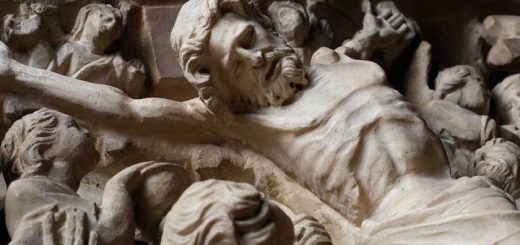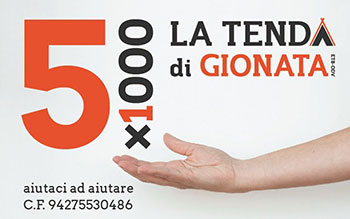The sign of the cross. Gestures, signs and words of the Liturgy
Article by Annamaria Fabri published on Castello7, weekly letter to parishioners, year 26, n.6 of 26 November 2017
When you enter a church there is the custom of making what we call the sign of the cross on yourself. This is the first sign entrusted to the believer and is also one of the oldest in the Christian faith. In fact, the catechumen (=one who comes from outside the church) who asks for baptism is welcomed with these words: «Receive the cross on your forehead: Christ himself protects you with the sign of his love, so that you can learn to know him and follow him".
Marking with the cross is a very ancient gesture already witnessed in the book of the Apocalypse which speaks of a "sign" on the forehead of those who have remained faithful. (Rev. 7.4; 9.4; 14.1). Saint Augustine says that «with the sign of the cross the body of the Lord is consecrated, the baptismal font is sanctified, the priests and other ministers are ordained, in short everything that, with the invocation of the name of Christ, must be made holy is consecrated".
The “crossing over” of Christians corresponds to this usage of the early church. The sign was made by marking the forehead with the thumb or forefinger of the right hand. The meaning was decidedly clear and demonstrated belonging to Christ and testified to faith in the salvific value of the cross. We signed our foreheads to invoke God's blessing, the blessing of the priest and, in private, before traveling, before going to bed, before meals, we marked the little ones as a gesture of love and blessing, etc. ..
Around the 4th century, the heart began to be marked along with the forehead. Later the sign of the cross on the lips was also added, a use that has remained in our Roman liturgy at the announcement of the gospel. The meaning is clear: the gospel is witnessed with one's head held high, it is announced with the mouth and it is lived with the heart.
The way of making the sign of the cross has known and still knows several variations. The most obvious is the one that became established starting from the 10th century, namely the "large" sign of the cross which is traced from the forehead to the chest and from one shoulder to the other, initially from right to left as it remained in the East, and later in the West from left to right. The reason is easily explained: in the East the faithful follow the blessing hand of the priest, while in the West they imitate him.
Even the way of holding the fingers of the hand has changed over the centuries, enriching this gesture with other meanings. In fact, starting from the 6th century it was customary to hold three fingers (thumb, index and middle finger) apart to symbolize the Trinity and the other two fingers joined to indicate the human-divine nature of Jesus Christ. At a later time we moved on to the open hand, as we do today. The sign of the spread fingers remained in the Popes' way of blessing and, out of curiosity, in the oath of the Swiss Guards. In the East the three fingers are joined and the sign of the cross is repeated three times.
The sign of the cross is also accompanied by very ancient formulas of which the main one is «In the name of the Father and of the Son and of the Holy Spirit".
This gesture, which is often reduced to a caricature, or worse, to a gesture of superstition, has a great meaning, which should be recognized more by Christians, because it is like a seal of Christ, which signals the believer's belonging to him. It is a profession of faith, it is a wishful gesture of protection against evil, it is an invocation of blessing and a wish for peace and salvation for men and things in the name of the one who with the cross redeemed us from evil and freed us from death.






